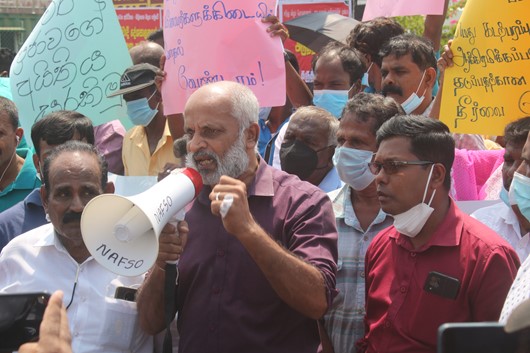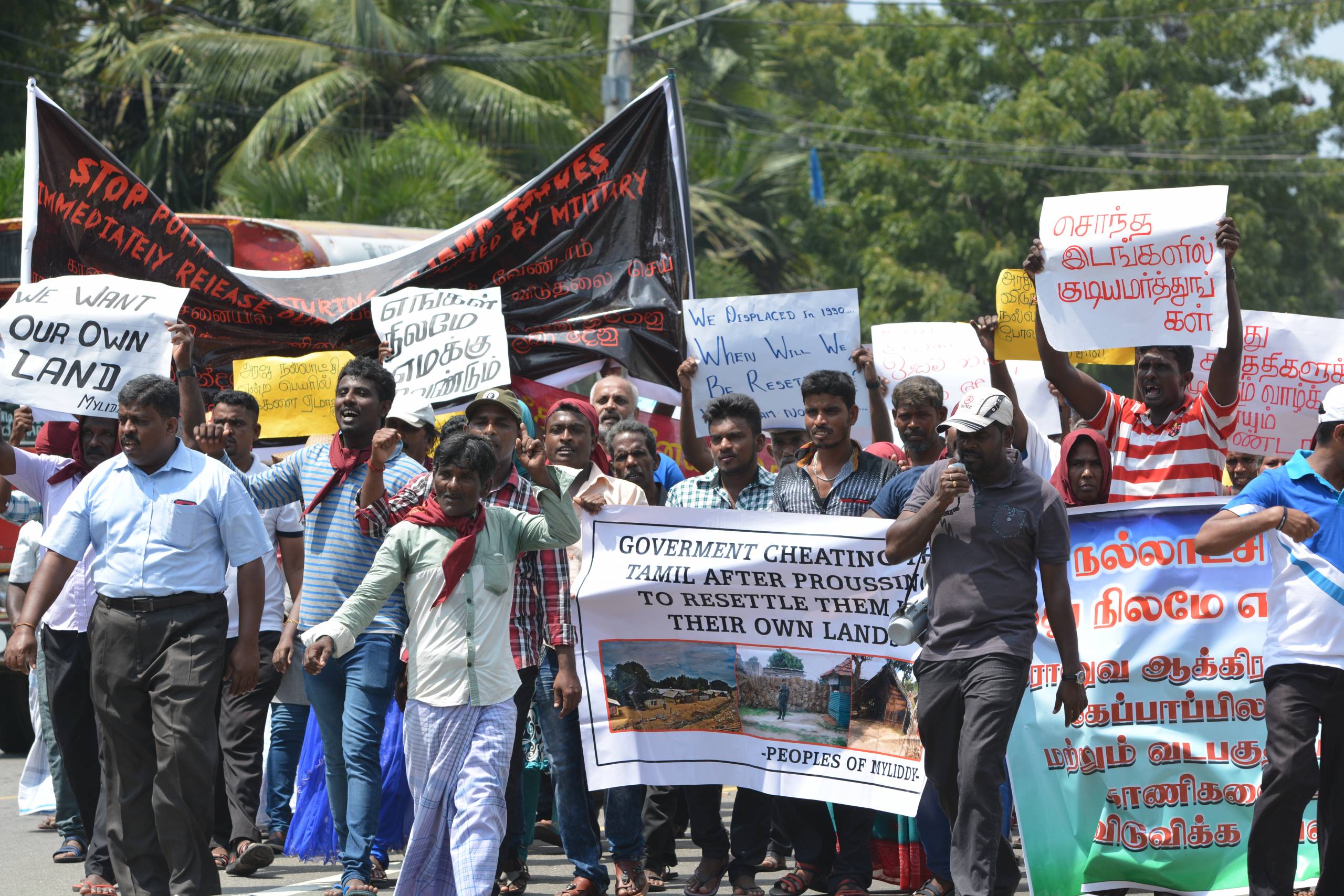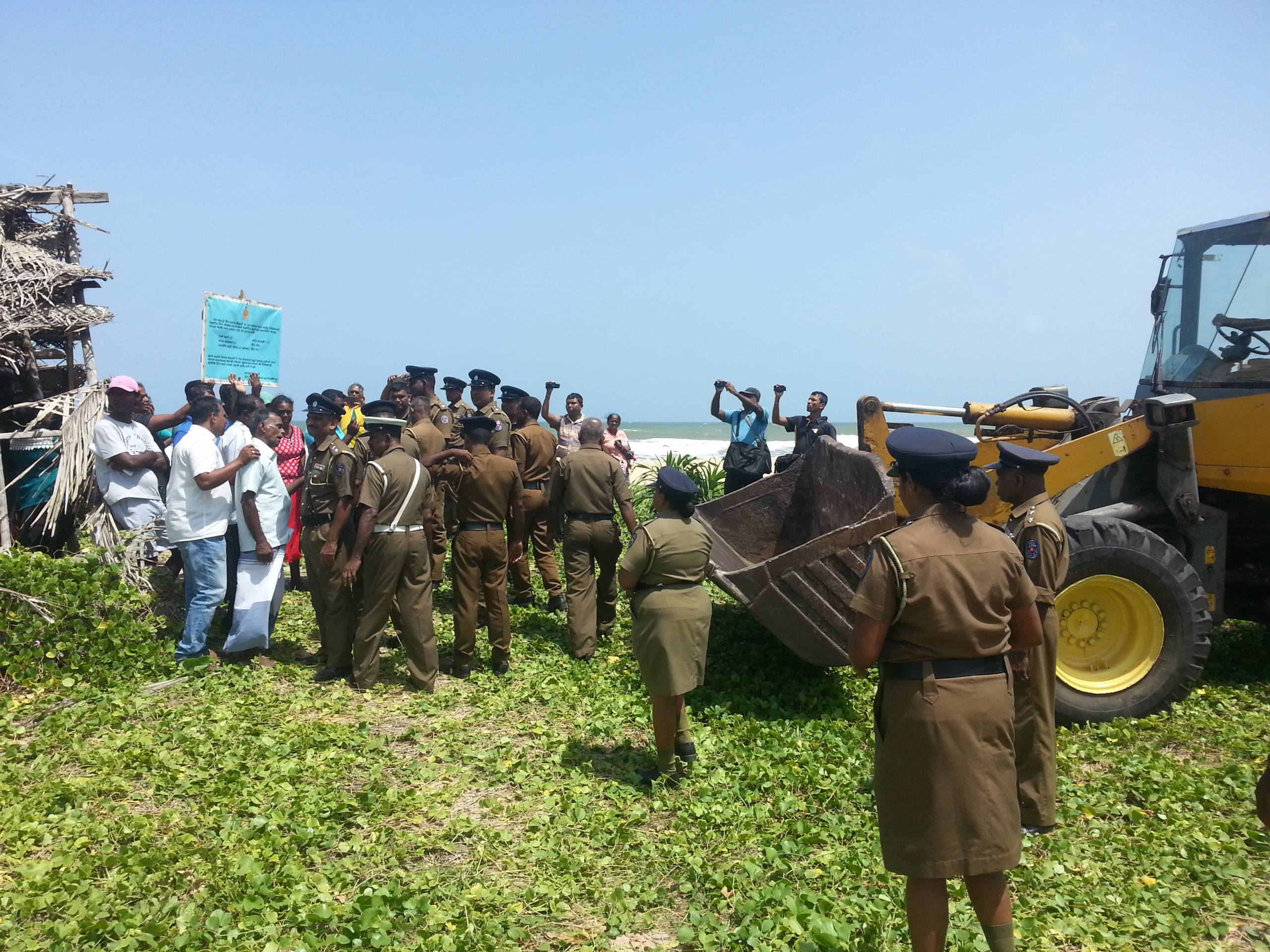By Herman Kumara | Chairperson, Praja Abhilasha, Sri Lanka
The Sri Lankan Civil War ended in 2009 and by 2010 country rulers declared that Sri Lanka was on its way to becoming a middle-income country with the scaling back of military spending. However, by the end of the 2019, Sri Lanka’s budget deficit had ballooned to 1016 billion LKR (about $5.03 billion).
So, Sri Lanka was already in financial trouble before the Covid-19 pandemic emerged worldwide and impacted its economy. In November of 2019, Sri Lanka’s new President, Gotabaya Rajapaksa, came to power and his first year in office (2020) saw the budget deficit more than double to 2090 billion LKR (about $10.34 billion). The former auditor general, Gamini Wijesinghe, revealed that the total amount of debt in the country is 10.32 trillion LKR (about $51.06 billion) and the total amount of government assets is 1.62 trillion LKR (about $8.02 billion), as of 2017.
First, soon after coming to power, the newly elected President cut taxes for the rich which could have raised 450 billion LKR (about $2.23 billion)[i] in 2019. This policy has grabbed resources from the poor to feed the rich.
Second, the government decided to enact an outright ban of the use of chemical fertilizers in order to cut $400 million in annual imports of chemical fertilizers out of the budget. A ban on chemical fertilizers is not bad in terms of practices, but the government did not provide training or tools to farmers or give farmers the necessary time to transition to organic farming. As a result, the paddy (rice) cultivation alone dropped by 40% according to a government report. This supply shortage has caused prices to inflate by 50% on all rice varieties. Previously, 1 Kg of rice cost on average less than 90 LKR (about $.45) while current prices are around 150-170 LKR per Kg (about $.74-$.84). Rice is a main staple in the Sri Lankan diet, and the scarcity of rice on the market, coupled with the income losses for poor and informal sector people due to the pandemic, is creating a situation where people can’t afford food. It was announced in January 2022 that China will donate 1 million metric tons of rice to Sri Lanka under the China-Sri Lanka Rubber Rice pact to offset the rice supply issue.
Third, Sri Lanka faced the worst ever serious foreign currency deficit due to the pandemic. Many Sri Lankans work as migrant workers in the Middle East and were sent home during the pandemic which had a large impact on the Sri Lankan economy. Remittances are the country’s main source of foreign earnings, and remittances dropped from $812.7 million in 2020 to $352.2 million by December 2021. That’s a loss of 57%.
Fourth, amid this financial crisis, the Government of Sri Lanka attempted to control the USD/LKR exchange ratio artificially which further worsened the financial situation. By January 2022, the government had printed 1.3 trillion LKR (about $6.43 billion) over a 2-year period. The amount printed is more currency than has been printed in the 74 years since independence. Much of the money printed went to pay for the implementation of government-run local project activities, and the payment of 1.8 million government workers’ salaries and the pensions of 1 million people.
Fifth, the tourism industry has seen decreased revenues during the pandemic. The Rajapakse regime expected to earn $8 billion in 2020 by bringing 4 million tourists to Sri Lanka, but instead tourism plummeted. Clearly, we can’t depend totally on the service economy in the future and should move towards more of a production economy as a developing nation.
Sixth, the county’s strategy to attract investors continues to be the same as all the previous governments since 2002.[ii] The main aim continues to be to attract investors with tax holidays, creating special economic zones, deregulation of land laws and provision of large land allocations for export crops (sugar cane, aloe vera, corn, and bananas), and the conversion of coastal, agricultural, farming, forest lands for tourism promotion[1]. At the same time, coastal and ocean grabbing took place through Chinese investments of $1.4 billion to construct Colombo International Financial City, known as Colombo Port City, which has devastated the fishing economy, accelerated the sea erosion and destroyed large areas of the coastal environment including the sea floor, seaweeds, and coral reefs. The indebtedness of the nation state causes it to turn a blind eye to environmental destruction. This project for which the country has gone further into debt has also cost people that depend on the coast, oceans, and other natural resources their livelihoods.[2] The destruction of natural forest cover and mangrove forests have led to a reduction in rainfall. And there has been a breakdown of the human elephant co-existence which has caused elephants to attack houses, farm fields, and put people’s lives in danger.

Herman Kumara, the chairperson of Praja Abhilasha stands with defenders of land rights. Photo courtesy of Praja Abhilasha.
Praja Abhilasha, the Joining Hands network in Sri Lanka, is working on people’s land rights issues and it is within this context of the national financial crisis that we need to strengthen our efforts. Praja Abhilasha is a network of civil society organizations, trade unions, and NGOs from across 17 districts in Sri Lanka. We have campaigned vigorously for more than 17 years in support of victims of land and resource grabbing, land tenure and human-elephant coexistence issues. As the financial situation continues to deteriorate in the country, it is more important than ever that we ensure that investments benefit the development of communities rather than worsen existing inequalities and injustices.
By the end of 2022, Sri Lanka is expected to pay back $6.5 billion,[iii] which feels a bit out of reach given the current economic crisis. In January 2022, the government had paid $500 million back in sovereign bonds[3] while reserves of foreign currency dropped from $1.1 billion in November 2021 to $0.6 billion. Such low reserves are not adequate for importing products such as: fuel, food, medicine, milk powder for infants, etc. Again, by June 2022 the country needs to pay another $100 million. The government is attempting to control these difficulties while reducing imports and reducing the foreign exchange flow. However, Sri Lanka is totally dependent on imports for local production, thus our economy will also be further squeezed.
The country’s situation is even worse if you consider the energy crisis. Sri Lanka has generated hydroelectricity as a primary source of electric power for decades. However, climate change has affected rain fall and reduced the water level of reservoirs which source the water to generate electricity. So, the country now is forced to depend more and more on coal and diesel power plants, which is causing increased dependence on foreign fuel imports that require a lot of foreign currency holdings to purchase. The reduction of foreign currency holdings has led to power cuts for more than 3 hours daily, affecting the informal economy and production sector as well. This is worsening the social and economic well-being of citizens.
Recently, the energy minister announced that they need to increase the fuel price, diesel by 20 LKR (about $.10) and Petrol 55 LKR (about $.27) which is the highest fuel price increase ever in the country[iv]. There is no need to explain how the fuel price hike will affect the country’s economy and how poor people in the informal economy will suffer as we have seen this scenario play out in many other countries.
There is a debate whether to approach the International Monetary Fund (IMF) or not though we have gone to the IMF 16 times since independence to recover the economy. The government is reluctant to do so due to the lack of compliance with the recommendations and conditions on ensuring human rights, accountability of war crimes, and ensuring peace and reconciliation among Sri Lankan communities. The government is not ready to keep such promises and get the support appropriately from the European Union and other supporting countries which deepen the financial, food, power, health, education, and environmental crises in the country.
[i] Dr. R.S.Samarathunge, former Secretary to the finance ministry during 2016 to 2019 at a conference, held on the 13th January, which was organized by NAFSO.
[ii] The Regaining Sri Lanka, the PRSP of the country in 2002, Mahinda Chinthana, in 2005, Mahinda Chinthana Way Forward in 2010, Good Governance Government in 2015 and Vision for 2050, the Saubagyaye Dakma of current regime in 2019 are following the same strategy of development of infrastructure to cater to the needs of the investors and the conducive environment to investments.
[iii] Dr. R.S. Samarathunge at the same conference.
[iv] Mr. Udaya Gammanpila, Minister of Energy in a press on 21st February, 2022 in Colombo announced the fuel price hike due to the net loss of petroleum cooperation.
The work of the Presbyterian Hunger Program is possible thanks to your gifts to One Great Hour of Sharing.

